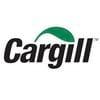Range enrichment on commercial free range layer farms
Published: October 14, 2025
Source : C.T. DE KONING 1, S. KITESSA 1 and K. DRAKE 2 / 1 South Australian Research and Development Institute (SARDI), Roseworthy Campus, University of Adelaide, South Australia, 5371; 2 Royal New Zealand SPCA, Animal Welfare Science and Education Department, PO Box 15349, New Lynn, Auckland 0640, New Zealand.
Hens using the outdoor range display better plumage condition suggesting lower incidence of injurious feather pecking (Chielo et al. 2016; Rodriguez-Aurrekoetxea and Estevez 2016). However, ensuring that the majority of the flock utilizes the range has been difficult. Therefore strategies such as range enrichment are required to induce more birds to use the range and encourage natural behaviour. An uncontrolled observational study was conducted in South Australia on two commercial fixed-range, free range layer farms (Farm 1: 3,000 hens and Farm 2: 10,000 hens, with range stocking density of 1,500 and 10,000 birds/ha, respectively). Hens were Hy-Line Brown and beak treated. A variety of enrichment structures was placed on the ranges of both farms to assess the level of use and attractiveness (e.g. shelters, sand pits, peck toys and hay bales). Farms were visited monthly (April to October 2016), when the enrichment structures were filmed for 1 h at each of 1100 h (AM) and 1500 h (PM) whereby the number of hens visiting the structures were counted continuously. The time of day, AM vs PM, did not influence the number of visits to the structures (Figs 1 & 2). Sand pits (for dust bathing) and overhead cover provided by constructed shelters received most hen visits (Figs 1 & 2). Although hay bales were visited, the number of visits was lower than for shelters. Distance of structures from the shed also influenced the level of hen visits. Visualization of the data (Fig 1) suggests the closest shelter on Farm 1 (Shelter 1 = 20 m from the shed) and hay bale (Hay 1 = 35 m from shed) had more visits than the distant shelter (Shelter 2 = 50 m) and hay bale (Hay 2 = 70 m). In conclusion, hens visited a variety of enrichment structures on the range that were cheap and easy to build.
Figure 1 - Average number of hen visits in one hour to various range enrichment structures on Farm 1.

Figure 2 - Average number of hen visits in one hour to various range enrichment structures on Farm 2.

ACKNOWLEDGEMENTS: We thank the Poultry CRC for providing the funds for this project and the collaborating farmers for allowing us to conduct the trial work on their properties.
Presented at the 29th Annual Australian Poultry Science Symposium 2018. For information on the latest and future editions, click here.
Chielo LI, Pike T & Cooper J (2016) Animals 6: 28.
Rodriguez-Aurrekoetxea A & Estevez I (2016) Poult. Sci. 95: 2503-2513.
Content from the event:
Related topics:
Mentioned in this news release:
CSIRO
Recommend
Comment
Share

Would you like to discuss another topic? Create a new post to engage with experts in the community.













